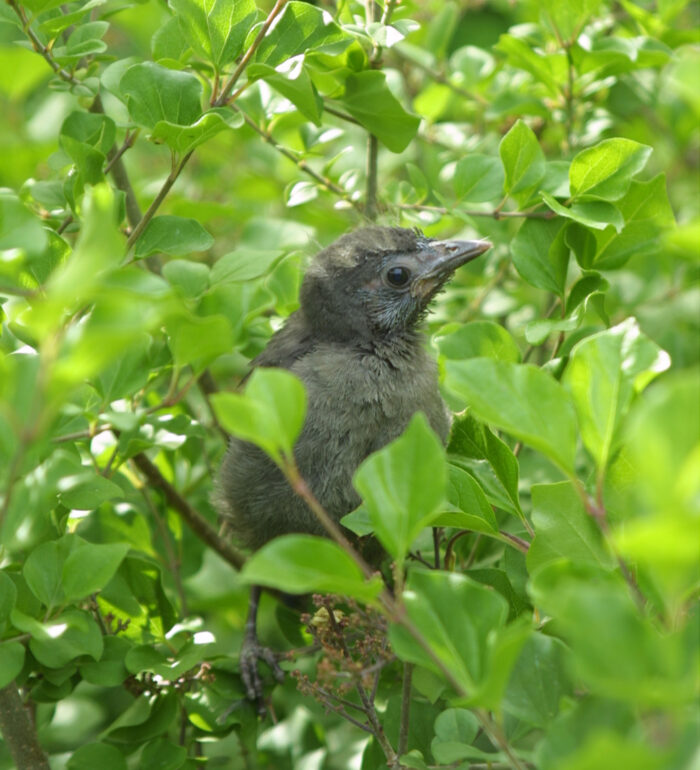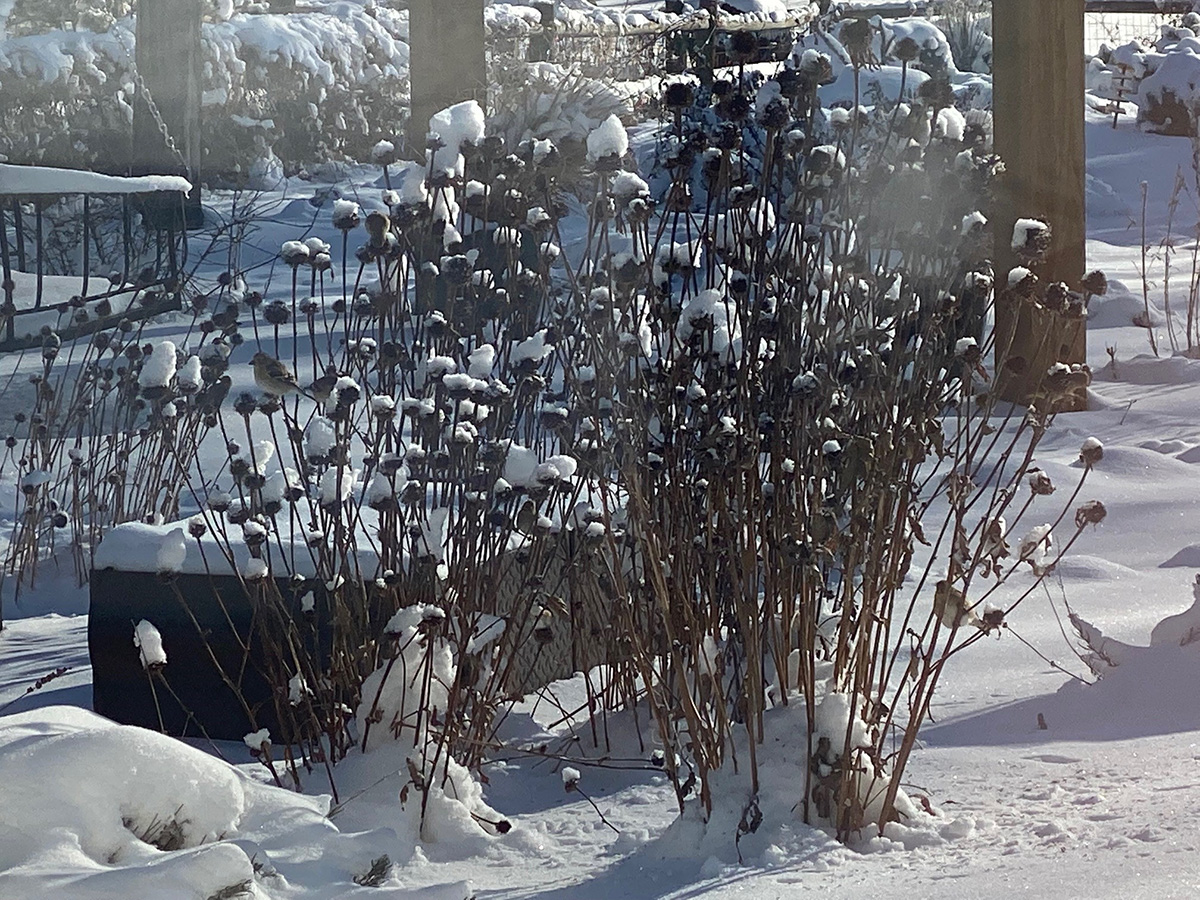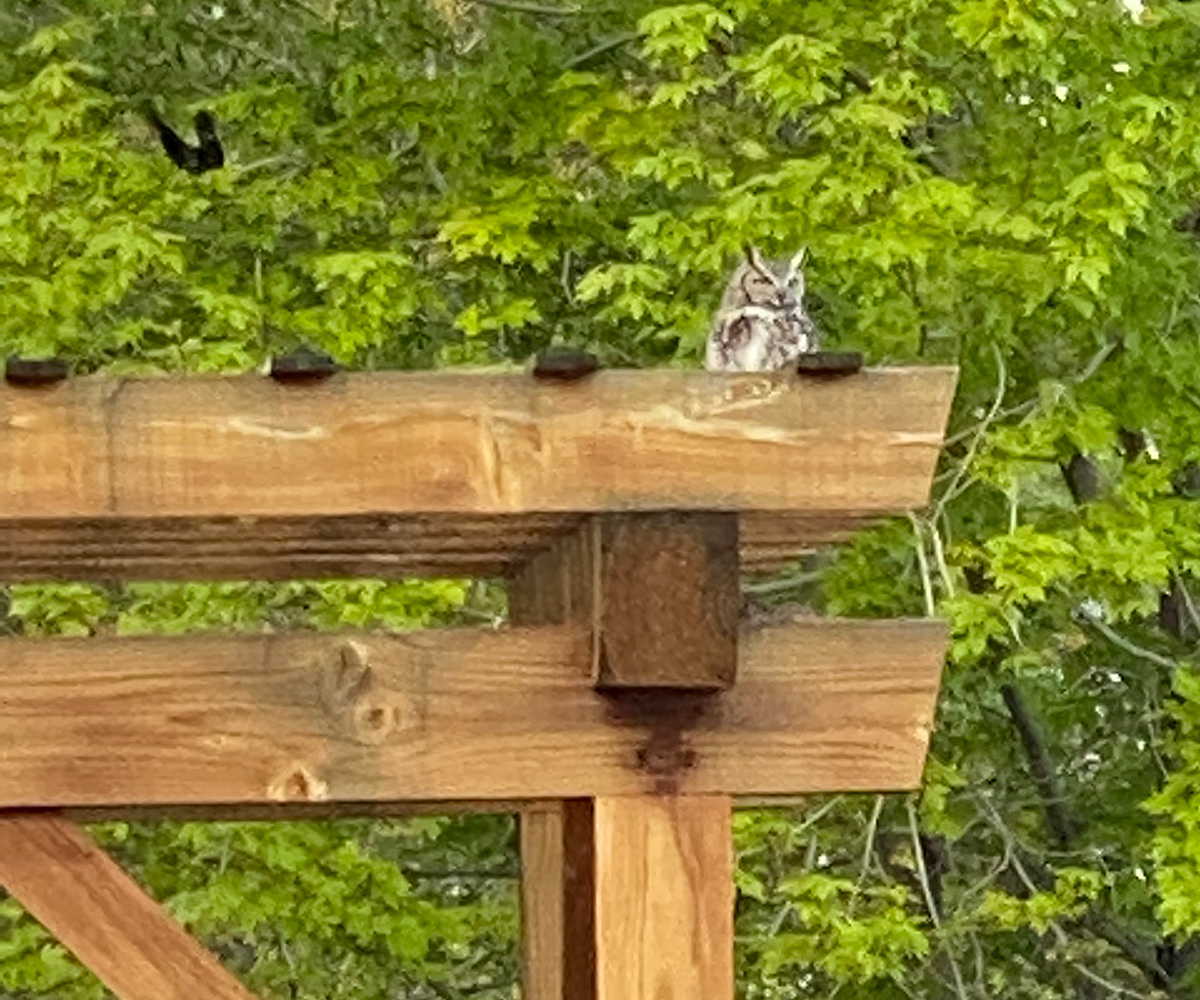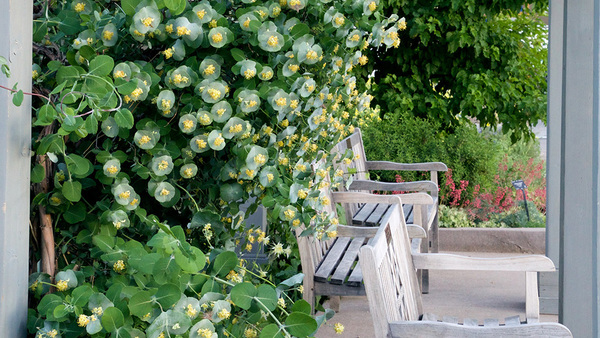
One of the unexpected benefits of working from home during the pandemic has been watching what happens in my yard throughout the week. It has brought me both delight and peace as I watch a wide variety of birds and pollinators enjoy my garden as much as I do. I had no idea I had so many visitors.
What can you do to invite our feathered friends into your garden? Birds need four primary things for survival: food, shelter, places to nest, and water. Here are some things you can do to provide those necessities.

Food sources
Native plants that your local birds are familiar with are the best options to attract them to your landscape. Be sure to use different varieties of plants that will provide different types of foods—seeds, nuts, berries, and nectar. Each will bring different bird species into the garden at different times of the year.
Another important food source is insects. Did you know that 96% percent of land birds feed insects to their chicks? Flowering plants will attract insects throughout the growing season. In the off-season, birds look for insects in piles of leaves and other detritus, so keep your garden just a little messy to provide insects year-round. And, of course, minimize pesticide usage—the birds will thank you.

Shelter and places to nest
Birds face many threats, including larger birds (such as owls and hawks), cats, and other predators. They do not like to be out in the open, where they are most vulnerable. To help them feel safe and secure enough to seek temporary shelter or build a nest, provide layers of dense plantings such as tall shade trees, smaller ornamental trees, or large shrubs. Even smaller plants such as more-compact shrubs, grasses, and perennials can provide shelter. Remember to provide layers and a mix of conifers and deciduous plants; conifers offer great protection from predators and bad weather.

Water
Just like us, birds need water to survive. Adding a water feature (especially one that makes noise) will attract birds for bathing and drinking.
It turns out that over the years I have done all of the things listed above as I renovated my garden and yard, and my reward is lots of birds, butterflies, and other pollinators, which have brought more color and life to my garden. I’ve added lots of native plants, removed thousands of square feet of sod to widen planting beds, and installed a bubbling rock feature. I love watching the birds come to bathe in it throughout the growing season.
If you would like to learn more about making your garden more bird-friendly, check out Audubon Rockies, which has a Habitat Hero program that recognizes individuals, organizations, and businesses in Colorado, Wyoming, and Utah who create habitat for birds and other wildlife by planting native plants. The website includes a wealth of information.
—Michelle Provaznik is executive director of the Gardens on Spring Creek in Fort Collins, Colorado.


















Comments
Log in or create an account to post a comment.
Sign up Log in